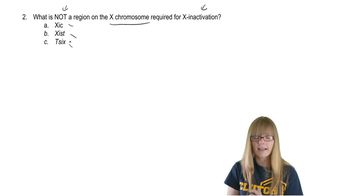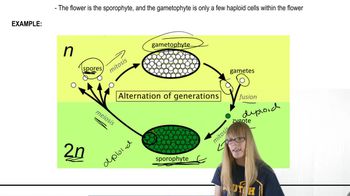Here are the essential concepts you must grasp in order to answer the question correctly.
X Chromosome Inheritance
X chromosome inheritance refers to the transmission of genetic traits located on the X chromosome. In females, who have two X chromosomes, the inheritance patterns can lead to unique phenotypic outcomes, especially when considering traits that are sex-linked. Understanding how these chromosomes segregate during meiosis is crucial for predicting the phenotypes of offspring.
Recommended video:
Meiosis and Gamete Formation
Meiosis is the process of cell division that produces gametes, reducing the chromosome number by half. In females, meiosis involves two rounds of division, resulting in four haploid cells from one diploid cell. Errors during this process, such as the detachment of X chromosomes, can lead to gametes with abnormal chromosome numbers, affecting the phenotypes of the resulting F₁ generation.
Recommended video:
Formation of Plant Gametes
Phenotypic Ratios in Offspring
Phenotypic ratios describe the relative frequencies of different observable traits in the offspring. In the context of X-linked traits, the ratios can reveal whether unusual genetic events, like the detachment of X chromosomes, have occurred. By analyzing the phenotypes of the F₁ generation, one can infer the genetic mechanisms at play and identify deviations from expected ratios that suggest such anomalies.
Recommended video:




